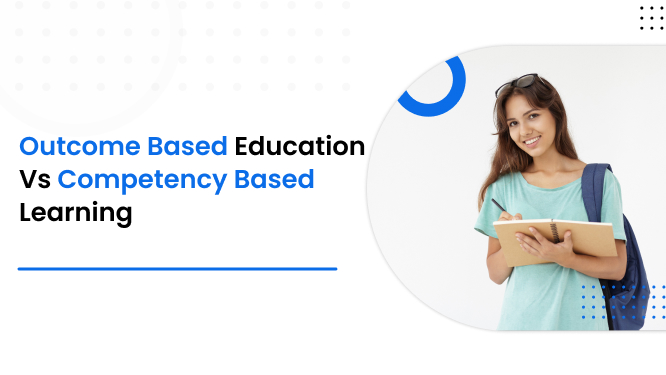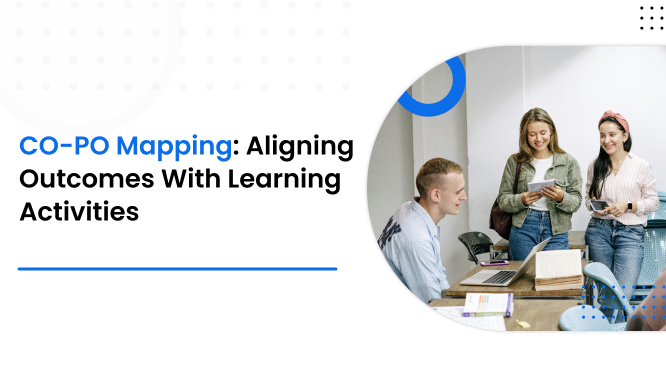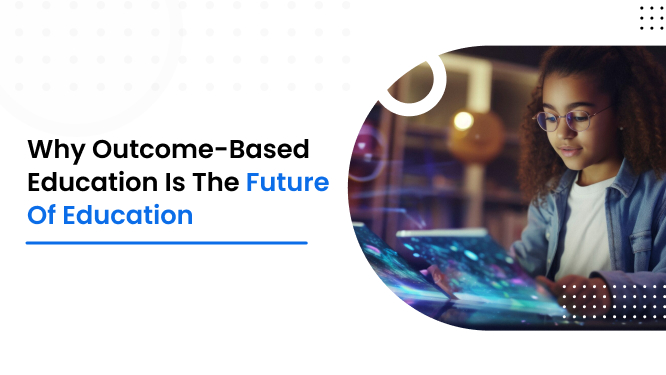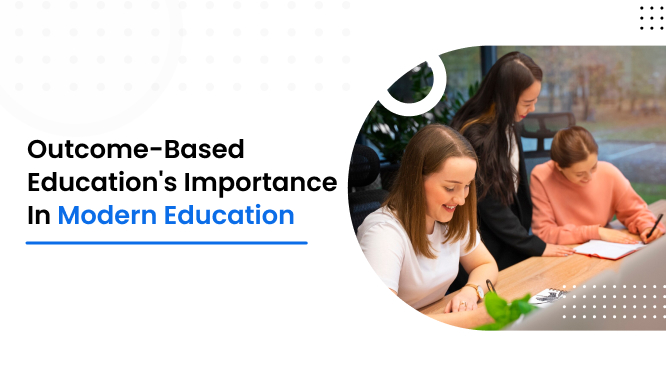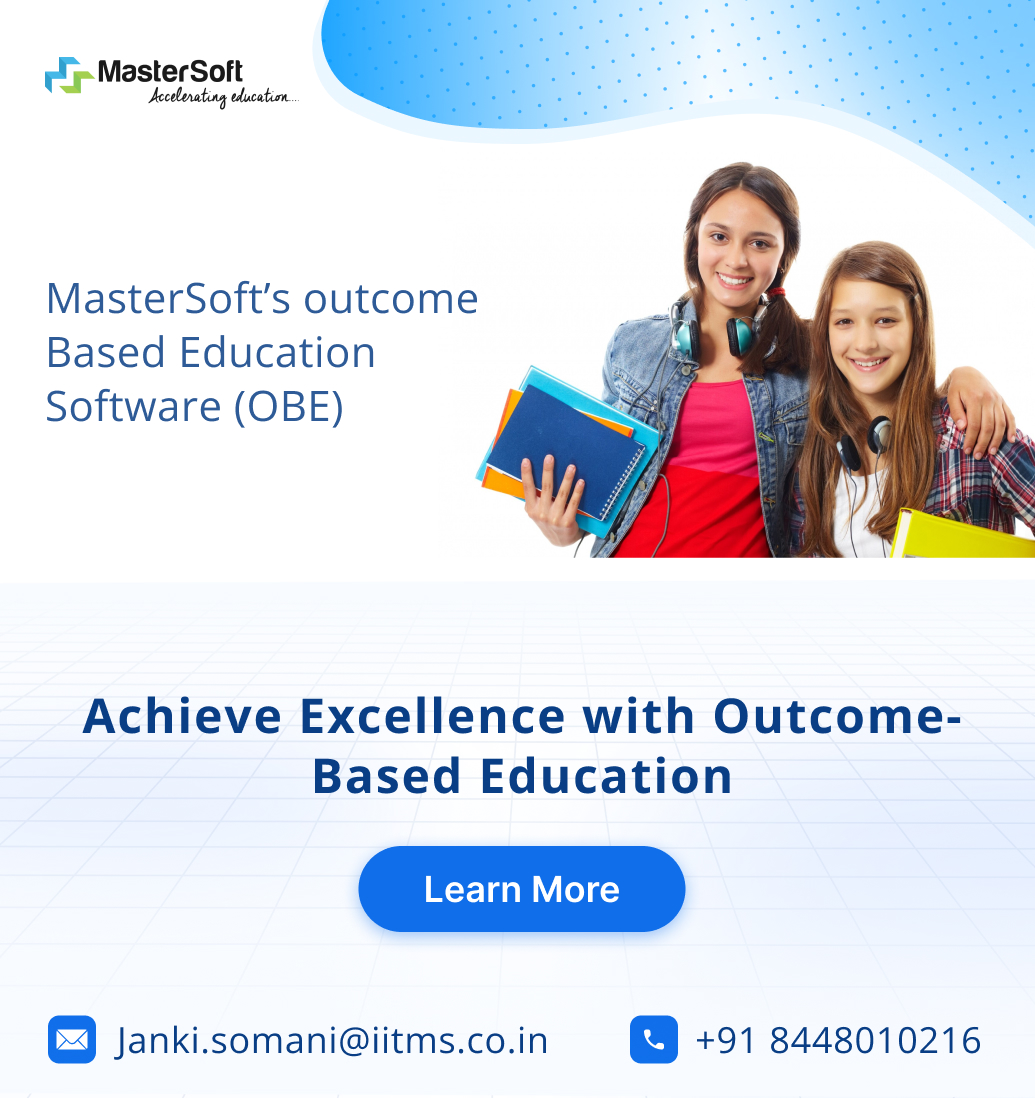Outcome Based Education vs Competency Based Learning
Looking at the way education is evolving, two key approaches have become popular: Outcome Based Education (OBE) and Competency Based Learning (CBL). These models aim to improve student learning and equip them with the skills needed for real-world challenges.
Outcome Based Education (OBE) focuses on what students are expected to achieve by the end of their education. It sets clear goals and measures students' success based on their ability to meet these objectives.
Competency Based Learning (CBL), on the other hand, emphasizes the development of specific skills and competencies. Students progress at their own pace, advancing only when they have demonstrated mastery of the subject matter.
In this blog post, we'll explore what Outcome Based Learning and Competency Based Learning are, how they differ, and what they mean for schools and colleges.
We'll look at the unique benefits they offer, and how they can be implemented to enhance the educational experience.
Table of Contents
- Understanding Outcome Based Education (OBE)
- Understanding Competency Based Learning (CBL)
- Comparing Outcome Based Education (OBE) and Competency Based Learning (CBL)
- Adapting to OBE and CBL: Key Considerations for Educational Institutions
- End Note
Understanding Outcome Based Education (OBE)
Outcome Based Education (OBE) is a modern approach to teaching that focuses on what students should achieve. Let's break down what OBE is all about, its main features, and why it's important today.
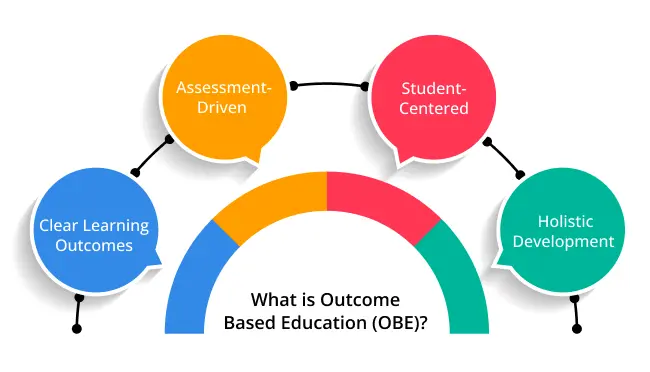
What is Outcome Based Education (OBE)?
At its heart, Outcome Based Education OBE shifts the focus from teaching content to ensuring students achieve specific goals. Here’s what makes it unique:
- Clear Learning Outcomes: Outcome Based Education defines exactly what students should know, do, or understand by the end of a course. These clear goals guide how courses are designed, taught, and assessed.
- Assessment-Driven: OBE uses various assessment methods like projects, portfolios, and practical tasks, not just final exams. This continuous assessment helps track student progress toward their goals.
- Student-Centered: In Outcome Based Learning, students take an active role in their learning. They are engaged and involved, working toward clear objectives. This makes learning more interactive and meaningful.
-
Holistic Development: OBE focuses on all aspects of learning:
- Cognitive: Developing critical thinking and problem-solving skills.
- Affective: Building emotional intelligence and ethical awareness.
- Psychomotor: Enhancing practical skills relevant to real life.
Why Outcome Based Education (OBE) Matters?
- Real-World Relevance: OBE prepares students for real-world challenges by emphasizing practical skills and competencies. It helps bridge the gap between school and work.
- Increased Motivation: When students see clear goals and understand the skills they are developing, they are more motivated to learn. Research shows that schools using OBE often have higher student engagement and satisfaction.
- Quality Assurance: Outcome based learning provides a structured way to measure and improve teaching and learning. It ensures that both teachers and students are accountable for meeting established outcomes, leading to better educational programs.
Understanding Competency Based Learning (CBL)
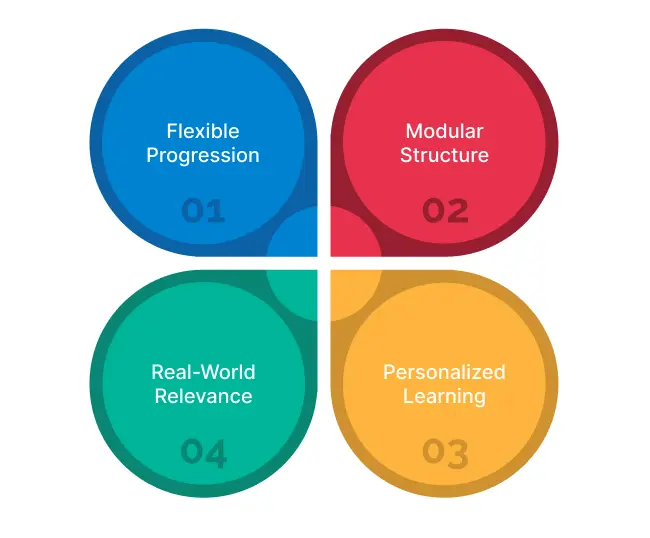
What is Competency Based Learning (CBL)?
Competency Based Learning (CBL) is a forward-thinking educational approach that focuses on building specific skills. Unlike traditional methods with fixed schedules, Competency Based Learning lets students progress at their own speed, emphasizing mastery over sticking to a timeline. Let's look at what makes Competency Based Learning unique and its impact on modern education.
Understanding CBL
At its core, Competency Based Learning focuses on skill acquisition rather than time spent in class. Here are its key features:
Flexible Progression:
In CBL, students move forward based on their mastery of skills, not by semester dates. This flexibility caters to different learning paces, allowing students to progress when they're ready.
For example, a student might quickly grasp one skill but need more time on another. CBL allows for this personalized progression, promoting a deeper understanding of each competency.
Modular Structure:
Competencies are divided into smaller, manageable units. Students focus on mastering one skill at a time before moving on to the next.
This approach ensures that students thoroughly understand each skill. They engage deeply with specific tasks, practicing until they achieve proficiency.
Real-World Relevance:
Competency Based Learning connects academic learning with practical skills needed in the workforce. It emphasizes competencies that are directly applicable in professional settings.
By aligning learning outcomes with real-world demands, Competency Based Learning prepares students for challenges they’ll encounter outside the classroom. Skills like coding, problem-solving, and effective communication are central to CBL.
Personalized Learning:
Competency Based Learning provides tailored support to meet individual student needs. Customized strategies help with both remediation and enrichment.
This personalized approach creates a supportive learning environment, where educators address specific gaps and offer additional resources as needed.
Why Competency Based Learning Matters
- Employability and Career Readiness: Employers value practical skills more than theoretical knowledge. Competency Based Learning equips students with competencies directly relevant to their careers. As students master skills, they become better prepared for internships, job interviews, and professional success.
- Lifelong Learning Mindset: Competency Based Learning fosters a growth mindset, encouraging students to view competence as something that develops over time. By focusing on specific skills, students build resilience, adaptability, and a commitment to continuous learning.
- Meeting Diverse Student Needs: Competency Based Learning recognizes that students have different backgrounds, learning styles, and paces. It accommodates non-traditional learners, working professionals, and those with unique circumstances. Whether a student completes a competency in weeks or months, CBL ensures that everyone moves toward mastery.
Comparing Outcome Based Education (OBE) and Competency Based Learning (CBL)
Outcome Based Education (OBE) and Competency Based Learning (CBL) are two unique approaches to education. While they have some similarities, they also have key differences. Let's look at where they overlap and where they differ:
Areas of Convergence
Student Outcomes:
Both Outcome based learning and Competency Based Learning focus on student outcomes. They believe education should result in real, tangible achievements, whether that’s skills, knowledge, or competencies.
OBE outlines clear learning outcomes, while CBL focuses on specific skills or competencies. However, both emphasize measurable achievements.
Active Learning and Engagement:
Both approaches encourage active student involvement. Students aren’t just passive learners; they actively engage in their education.
In OBE, this might be through project-based tasks. In CBL, it’s about mastering specific skills. Either way, students apply concepts and demonstrate their understanding.
Practical Application of Knowledge:
Both models stress the importance of applying knowledge in real-world situations. Education should prepare students for real-life challenges.
OBE ensures students can use what they’ve learned, while Competency Based Learning directly links learning with industry needs.
Key Differences Between OBE and CBL
| OBE | CBL | |
|---|---|---|
| 1. Focus | Focuses on learning outcomes. It defines what students should know or be able to do by the end of a course or program. | Focuses on specific competencies. It breaks down skills into individual units, allowing students to master one at a time. |
| 2. Assessment | Looks at overall achievement. It evaluates students' progress based on the predefined learning outcomes. | Evaluates mastery of specific skills. Students show their proficiency in each skill, independent of traditional academic schedules. |
| 3. Timeline | Follows a set timeline. Courses have a predetermined schedule, and students move through them together. | Allows for flexible progression. Students advance when they demonstrate mastery, without being tied to a fixed academic calendar. |
Adapting to OBE and CBL: Key Considerations for Educational Institutions
As education evolves, schools and colleges must keep up with the changing needs of students and the job market. Outcome Based Education (OBE) and Competency Based Learning (CBL) offer different approaches, each with important implications. Here are the key considerations:
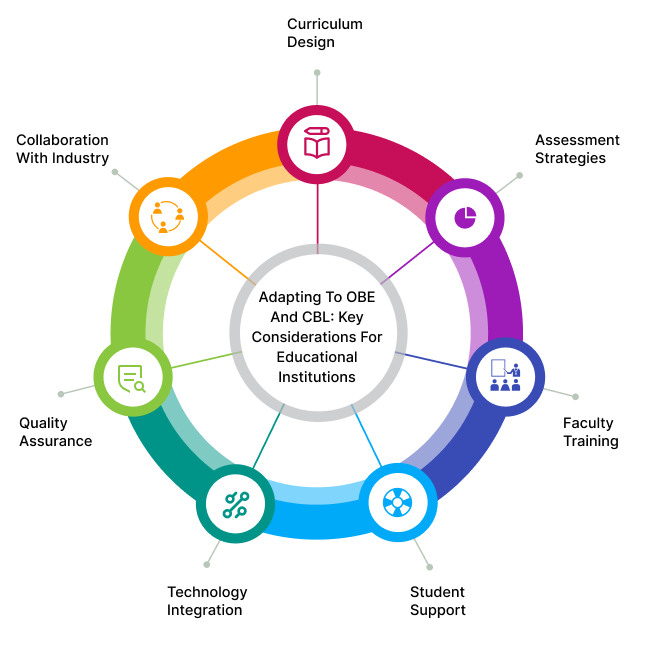
Curriculum Design:
- OBE: Design courses with clear learning outcomes. Specify what students should achieve by the end of each course or program.
- CBL: Break down skills into individual units. Create modular courses that focus on specific competencies and align with industry needs.
Assessment Strategies:
- OBE: Develop strong assessment methods to measure both outcomes and competencies. Use ongoing assessments to track student progress.
- CBL: Focus on assessing mastery of individual skills. Use continuous assessments, performance tasks, and real-world simulations.
Faculty Training:
- OBE: Train educators to effectively implement OBE. Provide guidance on outcome-focused teaching, assessment design, and student-centered methods.
- CBL: Educators need training in competency based teaching, personalized learning, and adapting to flexible student progress.
Student Support:
- OBE: Offer personalized guidance to help students meet learning outcomes. Address learning gaps quickly and provide extra resources.
- CBL: Support students at each stage of skill mastery. Tailor remediation and enrichment to individual needs.
Technology Integration:
Both OBE and Competency Based Learning can benefit from technology. Learning management systems, adaptive platforms, and data analytics can enhance personalized learning experiences.
Quality Assurance:
Regularly evaluate the effectiveness of OBE and CBL programs. Gather feedback from students, teachers, and employers to improve practices. Monitor student success rates, employability, and satisfaction.
Collaboration with Industry:
Work with employers and industry experts. Ensure that the skills taught align with real-world needs. Create partnerships for internships, work-integrated learning, and validating competencies.
End Note
Outcome Based Education (OBE) and Competency Based Learning (CBL) offer distinct yet complementary approaches to education. OBE focuses on achieving clear learning outcomes, while CBL emphasizes mastering specific skills at one's own pace.
Both models prepare students effectively for real-world challenges by aligning education with practical needs and fostering continuous learning. By integrating elements of both approaches, institutions can create a robust educational framework that equips students for success in a dynamic world.
